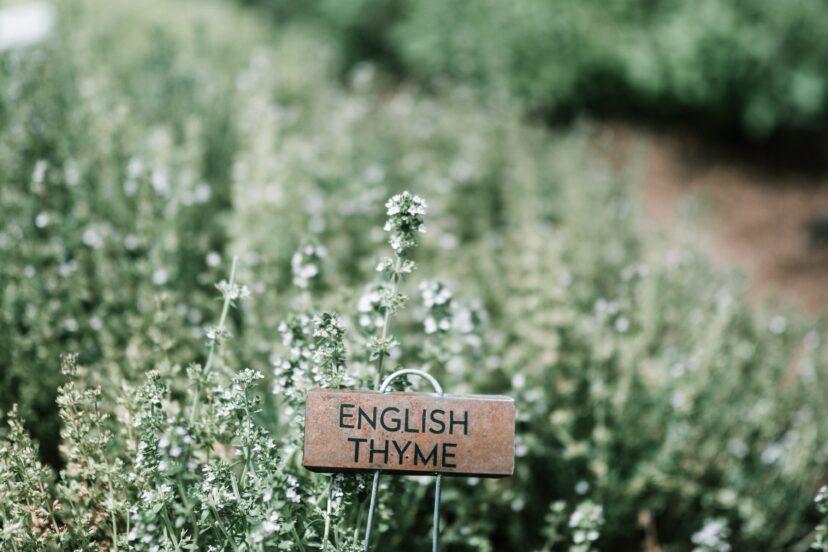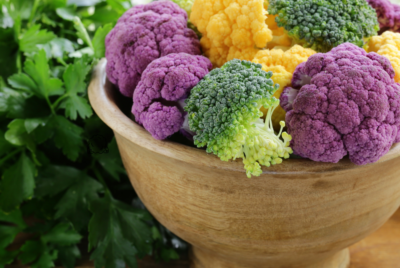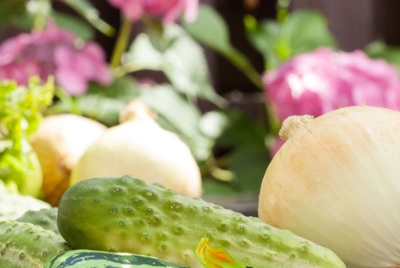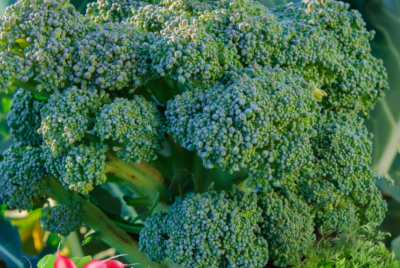Thyme Companion Plants
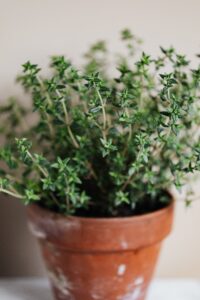
I. Introduction to Thyme Companion Plants
Hey there, fellow plant lovers! Today, I’m going to share my personal experience and insights about growing thyme and its best companion plants. If you’re as interested about herbs as I am, you’ll love exploring the wonderful world of thyme companion plants.
1.1. The Importance of Companion Planting
Thyme, a versatile and aromatic herb, holds significant importance in companion planting. This practice, crucial for ecological gardening, involves pairing plants that mutually benefit each other. Thyme excels in this role, offering pest control and soil improvement for its neighbors. Its strong scent naturally repels many pests, making it a guardian for more vulnerable plants. Additionally, thyme’s hardiness and low maintenance make it an ideal companion, enhancing garden biodiversity and promoting healthier, more robust plant communities. This symbiotic relationship underscores thyme’s value beyond culinary uses, highlighting its role in a balanced and productive garden ecosystem.
II. What is Thyme?
Description of thyme
Thyme is a small, perennial shrub, well-known for its aromatic, small, green leaves and tiny, purple flowers. Belonging to the mint family, Lamiaceae, thyme is both a culinary and medicinal herb. It typically grows low to the ground, forming a mat-like appearance, and is hardy, withstanding various climates and soil conditions. The leaves of thyme are its most used part, distinguished by their pungent, earthy fragrance, which is more intense just before flowering. This herb is not just a staple in kitchens for its flavor; it’s also cherished in traditional medicine and aromatherapy for its therapeutic properties, including antiseptic and antibacterial qualities. Thyme’s versatility extends to decorative uses in landscaping, often planted in rock gardens, borders, or as ground cover, adding both beauty and function to any garden space.
Historical and medicinal uses
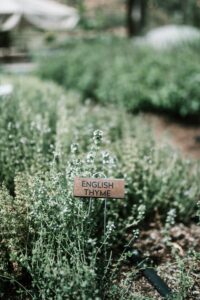
Thyme has a storied history, interwoven with culinary, medicinal, and cultural significance. In ancient Egypt, it was used in embalming practices due to its strong antiseptic properties. The Greeks used thyme as incense in temples and believed it was a source of courage, often bathing in waters infused with thyme before battles. Throughout the Middle Ages, thyme was associated with bravery, and knights often carried scarves embroidered with thyme.
Medicinally, thyme has been used for centuries. Its leaves and oil contain thymol, an antiseptic and antifungal component. Thyme has been used to treat respiratory conditions like bronchitis and cough, and its antimicrobial properties make it effective in mouthwashes and hand sanitizers. In herbal medicine, thyme tea is often recommended for soothing sore throats and calming digestive issues. This rich history not only highlights thyme’s versatility but also its enduring significance through the ages.
III. Basics of Companion Planting
Definition of companion planting
Companion planting is an agricultural practice where different plants are grown near each other for mutual benefit. This technique involves strategically placing plants together to enhance growth, deter pests, and improve pollination. It leverages the natural relationships between plants, optimizing space and resources. By understanding the characteristics of each plant, gardeners create a symbiotic environment where plants support each other’s health and productivity, leading to a more bountiful and sustainable garden. Companion planting is a cornerstone of organic and permaculture gardening practices.
Benefits for herbs like thyme
Companion planting offers a multitude of benefits for herbs like thyme, enhancing their growth and vitality. By pairing thyme with compatible plants, its growth is optimized through natural pest control; the herb’s strong aroma repels many garden pests, protecting both itself and its neighbors. This symbiotic relationship reduces the need for chemical pesticides, promoting a healthier, more organic garden environment. Furthermore, thyme can improve the soil’s structure and nutrient content, benefiting surrounding plants. The herb’s presence also attracts beneficial insects, like bees and butterflies, essential for pollination. These advantages make thyme a valuable companion, contributing to a diverse, resilient, and productive garden ecosystem.
IV. Best Companion Plants for Thyme
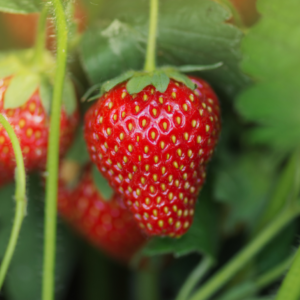
1. Strawberries
Strawberries make excellent companion plants for thyme. This pairing benefits both plants in several ways. Firstly, thyme acts as a natural pest repellent with its strong scent, deterring pests that typically harm strawberry plants. It helps in keeping away slugs and snails, common nuisances for strawberries. Moreover, thyme attracts beneficial pollinators like bees, which are crucial for the pollination of strawberry flowers, thereby enhancing fruit production. The low-growing habit of thyme also helps in weed suppression, creating a living mulch around strawberry plants. This not only conserves moisture but also keeps the soil cool and provides a beautiful aesthetic contrast between the lush strawberries and the delicate thyme foliage.
2. Cabbage family
Pairing thyme with members of the cabbage family, including broccoli, Brussels sprouts, cabbage, cauliflower, and kale, is highly beneficial. Thyme serves as a powerful ally in pest management for these plants. Its potent scent naturally repels common pests like cabbage worms and whiteflies, which can significantly damage these vegetables. Additionally, thyme can enhance the flavor and growth of cabbage family plants. The herb’s small flowers attract beneficial insects like ladybugs and predatory wasps, which help control pest populations. This mutually beneficial relationship leads to healthier, more robust plants and potentially higher yields in the vegetable garden, making thyme an invaluable companion for the cabbage family.

3. Roses
Roses and thyme form a splendid gardening duo.
Thyme, with its aromatic properties, acts as a natural deterrent to several pests that trouble roses, such as aphids and black spot.
Its strong scent masks the fragrance of roses, confusing pests and keeping them at bay.
Moreover, thyme’s low-growing habit makes it an excellent ground cover around rose bushes, helping to suppress weeds and maintain soil moisture, which benefits the roses.
The herb’s delicate, tiny flowers also add aesthetic appeal to the garden, creating a beautiful contrast with the bold blooms of roses.
This pairing not only enhances the health and beauty of rose bushes but also contributes to a more diverse and sustainable garden ecosystem.
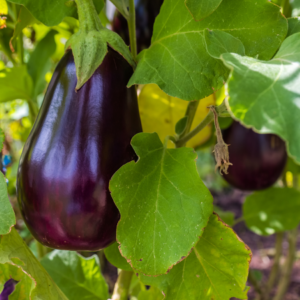
4. Eggplants
Eggplants are another excellent companion for thyme. The relationship between these two plants is particularly beneficial in organic and sustainable gardening.
Thyme’s strong scent is effective in repelling several pests that target eggplants, such as flea beetles and aphids. These insects can cause significant damage to eggplants, and thyme acts as a natural deterrent, reducing the need for chemical pesticides.
Additionally, thyme can attract beneficial insects like bees and butterflies, which are important for pollinating eggplant flowers. This leads to better fruit set and potentially larger yields.
The herb’s dense growth can also help suppress weeds around eggplants, reducing competition for nutrients and water.
Moreover, thyme’s root system can help improve soil structure and drainage around eggplants, which prefer well-drained soil conditions.
This symbiotic relationship between thyme and eggplants contributes to a healthier, more productive garden.
V. Why These Companions Work Well with Thyme
1. Pest control
The companionship of thyme in the garden serves as a powerful natural pest control agent. Thyme emits a strong, pungent aroma that is highly effective in repelling a variety of garden pests. This herb specifically deters insects such as cabbage worms, aphids, and beetles, which are known to cause damage to many garden plants. The volatile oils present in thyme, especially thymol, act as a natural insect repellent. By planting thyme alongside susceptible crops, gardeners can reduce the infestation of these pests without resorting to chemical insecticides. This organic approach not only protects the plants but also contributes to a healthier garden ecosystem, promoting biodiversity and reducing harm to beneficial insects.
2. Soil improvement
Thyme contributes significantly to soil improvement when paired with companion plants. This herb, with its deep and extensive root system, is effective in breaking up compacted soil, thereby enhancing soil structure and aeration. This is particularly beneficial for plants that require well-drained soil, as improved soil structure allows for better water penetration and root growth.
Additionally, thyme is a low-maintenance plant that doesn’t heavily deplete soil nutrients, making it an unobtrusive companion. Its presence can help maintain a balanced nutrient profile in the soil, which is essential for the overall health of the garden. As thyme decays, it also adds organic matter to the soil, further enriching it.
Moreover, thyme’s ground-covering nature helps in retaining soil moisture and reducing water evaporation. This is particularly beneficial during dry spells, as it reduces the need for frequent watering and ensures that companion plants receive adequate moisture. This harmonious relationship between thyme and its companions leads to a healthier, more fertile soil environment, supporting a thriving garden ecosystem.
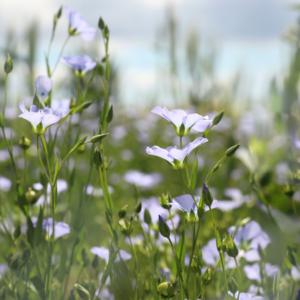
3. Why Thyme Companion Plants Work So Well.
The companions of thyme work well together for several key reasons, creating a symbiotic relationship that enhances the overall health and productivity of the garden.
a. Natural Pest Control
Thyme’s aromatic properties naturally deter a range of common garden pests. This herb is particularly effective against pests that are harmful to plants like cabbage, strawberries, roses, and eggplants. Its strong scent masks the plants’ odors, confusing pests and reducing infestation without the need for harmful chemicals.
b. Soil Improvement
Thyme’s root system helps in aerating the soil and improving its structure. This is beneficial for companion plants that thrive in well-drained soil. Additionally, thyme, as a ground cover, helps in retaining soil moisture and preventing weed growth, maintaining a healthier soil environment.
c. Attracting Beneficial Insects
Thyme flowers are attractive to beneficial insects like bees and butterflies, which are essential for pollination. This not only aids in the fruiting of companion plants but also contributes to the overall biodiversity of the garden.
d. Mutual Growth Support
Thyme is unobtrusive and doesn’t aggressively compete for nutrients, making it an ideal companion. It coexists well with other plants, ensuring that all can thrive without hindering each other’s growth.
e. Aesthetic and Practical Harmony
The low-growing nature of thyme complements the taller stature of plants like eggplants and cabbage, creating a visually appealing garden layout. Additionally, the diverse textures and colors of these plants enhance the overall beauty of the garden space.
These aspects underscore why thyme and its companions work well together, fostering a garden environment that is not only productive but also sustainable and ecologically balanced.
VI. Plants to Avoid Pairing with Thyme
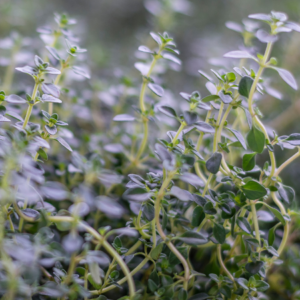
1. Incompatible plants
While thyme is a versatile and beneficial herb in companion planting, there are certain plants that should be avoided as they are incompatible with thyme. These include:
a. Cucumbers
Thyme can adversely affect the growth of cucumbers. Its strong scent and root system may interfere with the cucumber plants’ ability to thrive, potentially stunting their growth.
b. Rue and Fennel
These herbs are generally not recommended to be planted near most other herbs and vegetables, including thyme. Rue and fennel can inhibit the growth of thyme, leading to a less productive garden.
c. Potatoes
Potatoes and thyme may not coexist well in the garden. Thyme can attract potato beetles, a pest that is detrimental to potato plants. Additionally, the different soil and watering requirements can make it challenging for both to thrive when planted closely.
d. Brassicas (in some cases)
While thyme can benefit many members of the cabbage family through pest control, it may also compete with them for nutrients and space if not managed properly.
When planning a garden, it’s important to consider these incompatibilities. Keeping thyme away from these plants ensures that all your garden inhabitants can grow healthily and without undue competition or risk of pest infestation.
VII. How to Plant Thyme and Its Companions
1. Step-By-Step Guide
Planting thyme and its companions can be a rewarding experience. Here’s a step-by-step guide to help you establish a thriving garden:
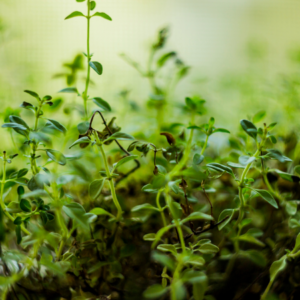
a. Choose the Right Location
Thyme thrives in full sun and well-drained soil. Select a spot that receives at least 6 hours of direct sunlight daily. Ensure the companions you choose have similar sunlight and soil requirements.
b. Soil Preparation
Prepare the soil by loosening it and removing weeds. Thyme prefers slightly alkaline soil, so you may need to adjust the pH if necessary. Incorporate organic matter or compost to enrich the soil.
c. Planting Thyme
Plant thyme seedlings or small plants after the last frost date. Space them about 9 to 12 inches apart to allow room for growth. Plant at the same depth they were in their pots.
d. Selecting and Planting Companions
Choose companion plants based on their compatibility with thyme. Plant strawberries, members of the cabbage family, roses, and eggplants in proximity, ensuring enough space between them for air circulation and growth.
e. Watering
Water the plants gently but thoroughly after planting. Thyme doesn’t require much water once established, so water sparingly and allow the soil to dry out between waterings.
f. Mulching
Apply a light layer of mulch around the plants to retain moisture, regulate soil temperature, and prevent weed growth. Be careful not to mulch too close to the thyme stems to prevent rot.
g. Pruning and Maintenance
Regularly prune thyme to encourage bushy growth. Keep an eye on the companion plants and prune or thin them as needed to prevent overcrowding.
h. Monitoring for Pests and Diseases
Regularly check your plants for signs of pests or diseases. Thyme is generally pest-resistant but keep an eye on the companion plants and treat any issues promptly.
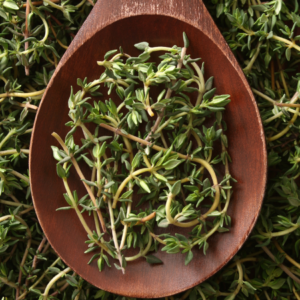
Harvesting
Harvest thyme just before it flowers for the best flavor. Pick the leaves as needed for fresh use, or dry them for later.
Rotation Considerations
If you are planning for the long term, consider rotating the companion plants annually to prevent soil depletion and reduce disease risks.
By following these steps, you can establish a beautiful and productive thyme garden that benefits from the natural synergies of companion planting.
VIII. Maintaining Your Thyme Companion Plants Garden
Maintaining a thyme garden requires some basic but important care practices to ensure healthy growth and abundant yields. Here’s a guide focusing on watering, sunlight, pruning, and harvesting:
1. Sunlight Requirements
Thyme thrives in full sun. It needs around 6 to 8 hours of direct sunlight daily. Ensure that your garden spot receives ample sunlight for the best growth.
2. Watering
Thyme is drought-tolerant once established. Water the plants deeply but infrequently, allowing the soil to dry out between waterings. Overwatering can lead to root rot, so ensure good drainage. During hot, dry periods, monitor the soil moisture and water as needed.
3. Pruning
Regular pruning is key to maintaining a healthy thyme plant. Prune in the early spring to encourage bushy growth and remove any dead or woody stems. During the growing season, light pruning can be done to shape the plant and control its size.
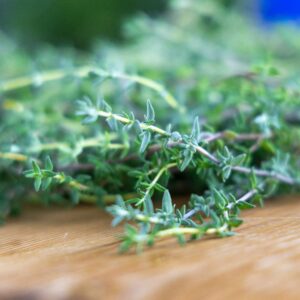
4. Harvesting
The best time to harvest thyme is just before the plant flowers, as this is when the oils and flavor are at their peak. Cut the stems in the morning after the dew has dried for the best flavor. Harvest by snipping off the top five to six inches of growth, leaving enough stem so the plant can continue to grow.
5. Post-Harvest Pruning
After harvesting, give the plant a light trim to encourage new growth. This will keep your thyme bushy and prevent it from becoming leggy or woody.
6. Winter Care
If you live in a region with cold winters, protect your thyme plants with mulch or bring potted thyme indoors.
Although thyme is generally hardy, it can benefit from some extra protection against frost.
By adhering to these care practices, your thyme garden will not only be a source of delicious herbs but also a delightful addition to your outdoor space. Regular attention to these details will ensure your thyme thrives, providing fresh herbs for your culinary needs and contributing to a healthy, vibrant garden.
IX. Thyme in the Kitchen

1. Culinary Uses
Thyme is a beloved herb in the culinary world, known for its versatile and distinct flavor. It imparts a somewhat earthy, slightly minty taste with subtle notes of lemon, making it a favorite in many dishes. Thyme is used in various forms – fresh, dried, and as an infused oil or vinegar. Its leaves, both fresh and dried, are commonly used in cooking.
a. Seasoning
Thyme is an integral part of the herb mix ‘bouquet garni’ and is used in seasoning meats, poultry, and fish. Its robust flavor complements a wide range of dishes.
b. Soups and Stews
The herb adds depth and complexity to soups, stews, and stocks. It pairs well with ingredients like tomatoes, onions, and beans.
c. Vegetable Dishes
Thyme enhances the flavor of roasted or sautéed vegetables, especially root vegetables like carrots, potatoes, and onions.
d. Breads and Baking
Fresh or dried thyme can be incorporated into bread dough or pastry for an aromatic twist.
e. Infusions
Thyme-infused oils and vinegars are excellent for dressings and marinades.
2. Recipes and Pairing Ideas
a. Lemon Thyme Roasted Chicken
A classic pairing, thyme and lemon bring out the best in roasted chicken, providing a fragrant and juicy dish.
b. Thyme-Infused Mushroom Risotto
Incorporate fresh thyme into a creamy risotto for an earthy, rich flavor that complements the mushrooms.
c. Garlic Thyme Roasted Potatoes
Toss baby potatoes with garlic, olive oil, and fresh thyme, then roast until golden and crispy.

d. Tomato and Thyme Soup
A simple yet flavorful soup, perfect for any season. Thyme brings a warm depth to the bright, tangy tomatoes.
e. Thyme and Honey Glazed Carrots
A sweet and savory side dish where thyme balances the sweetness of the honey glaze.
f. Thyme and Cheese Scones
Add dried thyme to your scone dough for a savory twist, perfect with cheeses like cheddar or gouda.
g. Thyme Lemonade
For a refreshing drink, infuse lemonade with thyme sprigs for a unique herbal twist.
Incorporating thyme into your cooking not only adds flavor but also brings a touch of aromatic elegance to your dishes.
Experimenting with this herb can elevate simple recipes into memorable culinary experiences.
XI. Thyme’s Medicinal Benefits
1. Historical Uses
Thyme has been valued for its medicinal properties since ancient times. The Egyptians used it in their embalming practices, while the Greeks used it in their baths and burned it as incense in temples, believing it was a source of courage. During the Middle Ages, thyme was associated with bravery, and knights often carried scarves embroidered with it into battle.
a. Respiratory Health
Historically, thyme has been used for respiratory ailments like bronchitis, whooping cough, and chest congestion. Its leaves were made into teas and syrups to ease coughs and soothe sore throats.
b. Antiseptic Uses
Thyme’s antiseptic properties were recognized early on. It was used in poultices and salves to treat wounds and prevent infections.
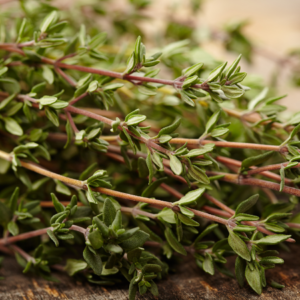
c. Digestive Aid
Thyme was also known for its ability to aid digestion, particularly in treating flatulence and colic.
2. Modern Applications
Today, the medicinal uses of thyme are supported by scientific research, and it continues to be a valuable herb in modern herbal medicine.
a. Thymol
One of the primary components of thyme is thymol, which has antiseptic and antifungal properties. It is used in various commercial products, including mouthwashes and hand sanitizers.
b. Respiratory Treatments
Thyme is still used for respiratory conditions. Modern herbalists often recommend thyme tea or extracts to relieve coughs, bronchitis, and chest congestion.
c. Immune System Support
Thyme is believed to boost the immune system and is often used in herbal remedies for colds and flu.
d. Antioxidant Properties
Thyme is rich in antioxidants, which help protect the body from oxidative stress and may reduce the risk of chronic diseases.
e. Skin Care
Due to its antiseptic and anti-inflammatory properties, thyme is used in natural skincare products to treat acne and other skin conditions.
f. Digestive Health
Thyme continues to be used for gastrointestinal issues, helping to relieve gas, bloating, and indigestion.
Thyme’s enduring medicinal uses, from historical to modern applications, highlight its significant role in natural health and wellness. Its therapeutic properties make it a staple in both traditional and contemporary herbal medicine.
XII. Challenges in Growing Thyme
Growing thyme can be a rewarding endeavor, but like all plants, it may face certain challenges. Here are some common issues and their solutions:
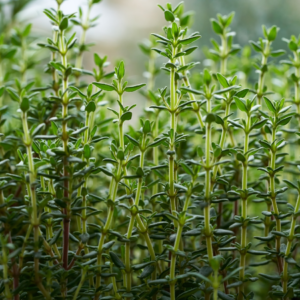
1.. Common Issues
a. Overwatering and Poor Drainage
Thyme is susceptible to root rot if overwatered or planted in poorly draining soil. Excess moisture around the roots can be detrimental. Thyme companion plants can help in some situations. Plant a thirsty plant.
b. Pest Infestations
While thyme is generally resistant to pests, it can occasionally be affected by aphids, spider mites, and whiteflies.
c. Fungal Diseases
Thyme can be prone to fungal diseases like powdery mildew, especially in humid or overcrowded conditions.
d. Leggy Growth
Without proper sunlight or pruning, thyme plants can become leggy, with sparse leaves and weak stems.
2. Solutions
a. Watering and Drainage
Ensure that thyme is planted in well-draining soil and only water when the soil is dry to the touch. Consider raised beds or containers if drainage is an issue in your garden.
b. Pest Management
Regularly inspect plants for pests. If infestations occur, treat with insecticidal soap or neem oil. Encouraging beneficial insects can also naturally control pest populations.
c. Disease Prevention
To prevent fungal diseases, space plants properly to ensure good air circulation. Avoid overhead watering to keep the foliage dry. If mildew appears, prune affected parts and treat with a fungicide if necessary.
d. Pruning and Sunlight
Regular pruning encourages bushier growth and prevents legginess. Ensure your thyme receives enough sunlight (at least 6 hours a day). If growing indoors, use grow lights to supplement light.
e. Soil Nutrition
While thyme isn’t a heavy feeder, occasional organic fertilization can help maintain robust growth, especially in poor soils.
By addressing these challenges with the appropriate solutions, you can enjoy a healthy and productive thyme garden, reaping the benefits of this versatile herb.
XIII. Conclusion on Thyme Companion Plants
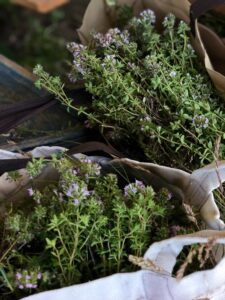
In conclusion, thyme is not just a culinary delight but also a valuable player in companion planting. Its compatibility with plants like strawberries, the cabbage family, roses, and eggplants enhances garden health through natural pest control, soil improvement, and attracting beneficial insects. While there are challenges in growing thyme, such as managing watering and sunlight, these can be easily overcome with proper care. I encourage you to embrace the joys of gardening with thyme, a small herb with big benefits, bringing both flavor and harmony to your garden.
XIV. FAQs about Thyme Companion Plants
1.What are the best conditions for growing thyme?
Thyme thrives in full sun and well-drained soil. It prefers a slightly alkaline pH and requires at least six hours of direct sunlight each day. Good drainage is crucial to prevent root rot.
2.Can I grow thyme indoors?
Yes, you can grow thyme indoors. Place it in a sunny window that gets plenty of light, or use a grow light. Be mindful of watering, as indoor thyme needs less water than outdoor plants.
3.How often should I water my thyme plant?
Water thyme when the soil feels dry to the touch. Overwatering can harm the plant, so ensure the soil has time to dry out between watering sessions.
4.What are some common pests that bother thyme?
While thyme is relatively pest-resistant, it can occasionally attract aphids, spider mites, and whiteflies. Inspect your plants regularly and use insecticidal soap or neem oil if pests are detected.
5.Can thyme help other plants in my garden?
Absolutely! Thyme is excellent for companion planting. Its strong scent repels pests, making it beneficial for plants prone to insect problems, like roses and cabbage family vegetables. It also attracts beneficial pollinators, aiding in the garden’s overall health.
Tomato and Thyme Soup Recipe
Ingredients:
1 tablespoon olive oil
1 large onion, finely chopped
2 cloves garlic, minced
1 carrot, diced
2 celery stalks, diced
2 cans (14 oz each) diced tomatoes, undrained
4 cups vegetable or chicken broth
2 tablespoons fresh thyme leaves (or 1 tablespoon dried thyme)
Salt and pepper, to taste
Optional: 1 teaspoon sugar (to balance acidity)
Optional garnish: Fresh thyme sprigs and a swirl of cream or a sprinkle of grated Parmesan cheese
Instructions:
Prepare the Vegetables
In a large pot, heat the olive oil over medium heat. Put the chopped onion in and sauté until translucent, about 3-4 minutes. Add the minced garlic, carrot, and celery, cooking for another 5 minutes until the vegetables start to soften.
Add Tomatoes and Broth
Stir in the diced tomatoes along with their juice. Add the vegetable or chicken broth. If using canned tomatoes that are particularly acidic, you can add a teaspoon of sugar to balance the flavor.
Season with Thyme
Add the fresh thyme leaves (or dried thyme if fresh is unavailable). Season the mixture with salt and pepper to taste.
Simmer the Soup
Bring the soup to a boil, then reduce the heat and let it simmer uncovered for about 20-25 minutes. This allows the flavors to meld together and the soup to thicken slightly.
Blend the Soup (Optional)
For a smoother texture, use an immersion blender to puree the soup right in the pot. Alternatively, you can leave it chunky for a more rustic feel.
Adjust Seasonings
Taste the soup and adjust the seasonings as needed. Add more salt, pepper, or thyme according to your preference.
Serve
Ladle the soup into bowls. Garnish with fresh thyme sprigs and a swirl of cream or a sprinkle of grated Parmesan cheese, if desired.
Enjoy
Serve the soup hot, accompanied by crusty bread or a side salad for a comforting and flavorful meal.
This tomato and thyme soup is a simple yet delicious dish, perfect for any season. The aromatic thyme complements the tanginess of the tomatoes, creating a warming and satisfying meal.
Thyme-Infused Mushroom Risotto Recipe
Ingredients:
1 cup Arborio rice
2 tablespoons olive oil
1 small onion, finely chopped
2 cloves garlic, minced
Two cups fresh mushrooms, sliced (such as cremini or button mushrooms)
4 cups vegetable or chicken broth
1/2 cup dry white wine (optional)
2 tablespoons fresh thyme leaves, finely chopped
1/2 cup grated Parmesan cheese
Salt and black pepper, to taste
2 tablespoons unsalted butter
Extra thyme sprigs for garnish
Instructions:
Prepare the Broth
In a saucepan, heat the broth over medium heat until warm. Keep it on low heat nearby to use later in the risotto.
Sauté the Aromatics
In a large, heavy-bottomed saucepan, heat the olive oil over medium heat. Add the chopped onion and cook until it becomes translucent, about 3-4 minutes. Add the minced garlic and cook for another minute until fragrant.
Cook the Mushrooms
Add the sliced mushrooms to the pan and sauté until they are tender and their moisture has evaporated.
Toast the Rice
Stir in the Arborio rice, making sure it’s well-coated with the oil and onions. Cook for about 2 minutes until the rice becomes slightly translucent at the edges.
Deglaze with Wine
If using, add the white wine and stir until it is mostly absorbed by the rice.
Add Broth Gradually
Begin adding the warm broth, one ladle at a time, stirring constantly. Wait until each addition of broth is almost fully absorbed before adding the next ladleful. This process should take about 18-20 minutes; the rice should be tender but still firm to the bite.
Infuse with Thyme
Halfway through cooking, add the chopped fresh thyme to the risotto, allowing its flavor to infuse throughout the cooking process.
Finish with Cheese and Butter
Once the rice is cooked to the desired consistency, remove from heat. Stir in the grated Parmesan cheese and butter. Season with salt and black pepper to taste.
Serve
Spoon the risotto into serving dishes. Garnish with extra thyme sprigs and a little more grated Parmesan if desired.
Enjoy
Serve the risotto immediately while it’s creamy and rich in flavor.
This thyme-infused mushroom risotto is a classic Italian dish, luxurious and full of earthy flavors. The aromatic thyme perfectly complements the mushrooms, creating a dish that’s both comforting and sophisticated. It’s perfect for a cozy dinner or a special occasion.

